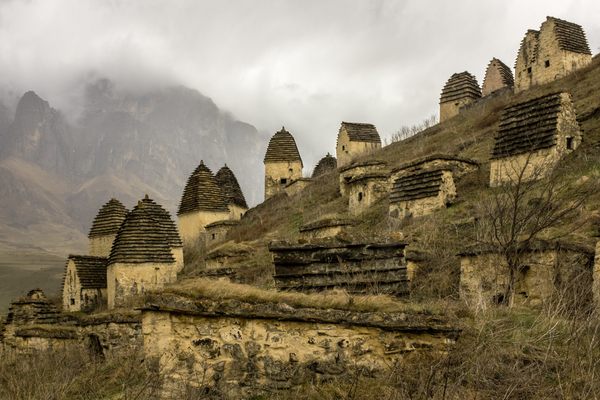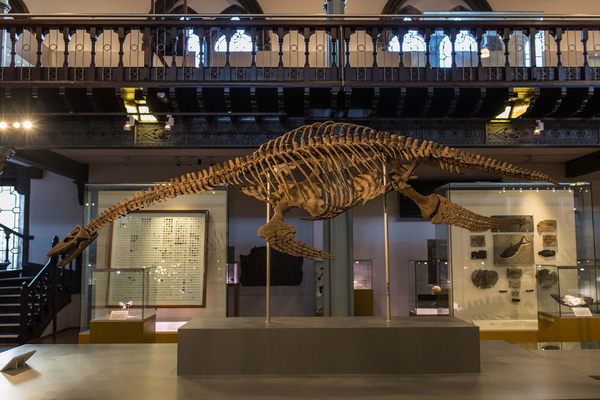Found: The Massive Skeleton of a Steller’s Sea Cow
A 17-foot-long sirenian emerges on a remote Russian island.

German zoologist and botanist Georg Wilhelm Steller, after an epic journey riddled with brutal storms and the looming threat of death by scurvy, was the first European to set foot in Alaska—on Kayak Island, in 1741. His leg of the Great Northern Expedition, led by Vitus Bering (of strait fame, who did, in fact, die of scurvy along the way), explored the Kamchatka Peninsula, and was shipwrecked for nine months in the Commander Islands, 100 miles offshore.
Among the many new species—including sea otters and hoary mugwort—that Steller skillfully documented on the journey was a massive sirenian (related to dugongs and manatees) that became known as Steller’s sea cow, or Hydrodamalis gigas. The massive aquatic mammal—between 5 and 10 tons in weight and up to 30 feet in length, with the face of a walrus and the tail of a dolphin—had once ranged across the North Pacific but was by then relegated to a relic population in the Commander Islands kelp beds. Steller was the first and last scientist to document the slow-moving sea creature—they were hunted to extinction less than three decades later.

This week the surpassingly rare bones of a Steller’s sea cow were discovered and excavated on Bering Island, the larger of the two Commander Islands. As explained in a statement by from the Commander Islands Nature and Biosphere Reserve, researcher Marina Shitova was walking on the beach as part of a regular survey when she spotted several ribs sticking up from the ground “like a fence.” Shitova and her team waited for the weather to clear before beginning a four-hour excavation of the skeleton. The skull was missing, but the scientists estimate the animal had been nearly 20 feet long.
The last full skeleton of a Steller’s sea cow had been found on the same island way back in 1987, and is now in the Aleutian Museum of Natural History in Nikolskoye.
















Follow us on Twitter to get the latest on the world's hidden wonders.
Like us on Facebook to get the latest on the world's hidden wonders.
Follow us on Twitter Like us on Facebook